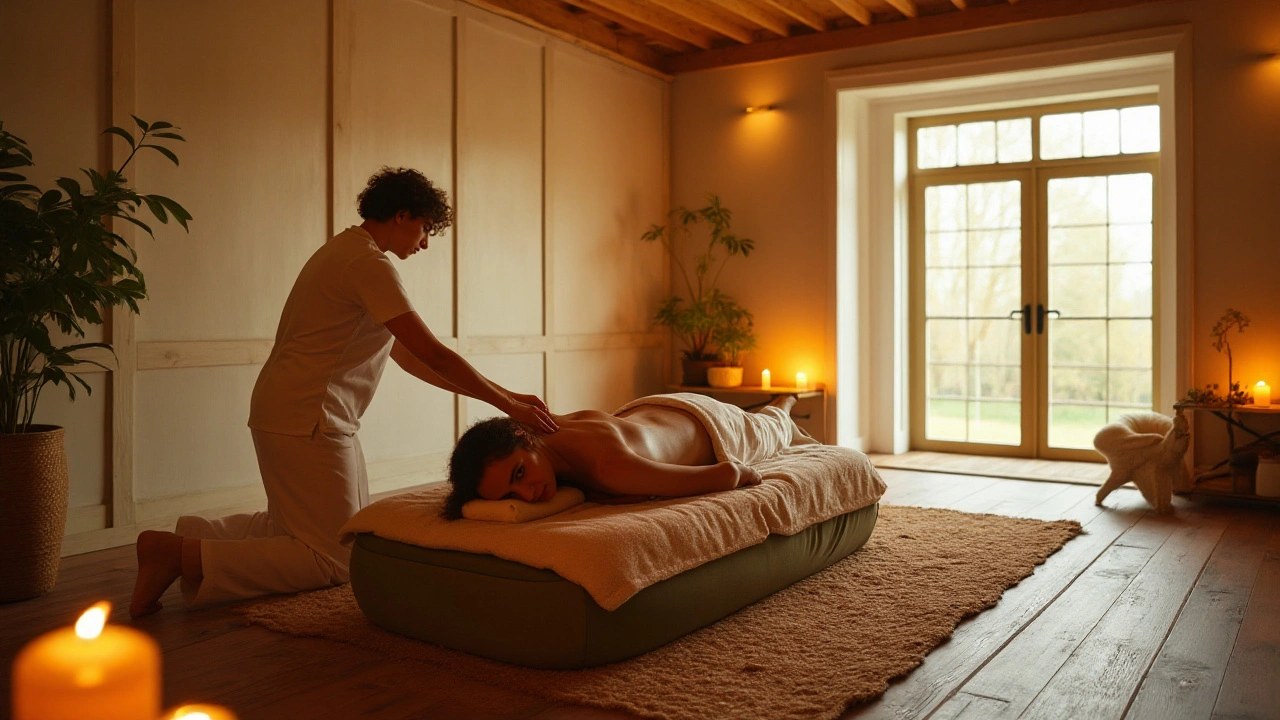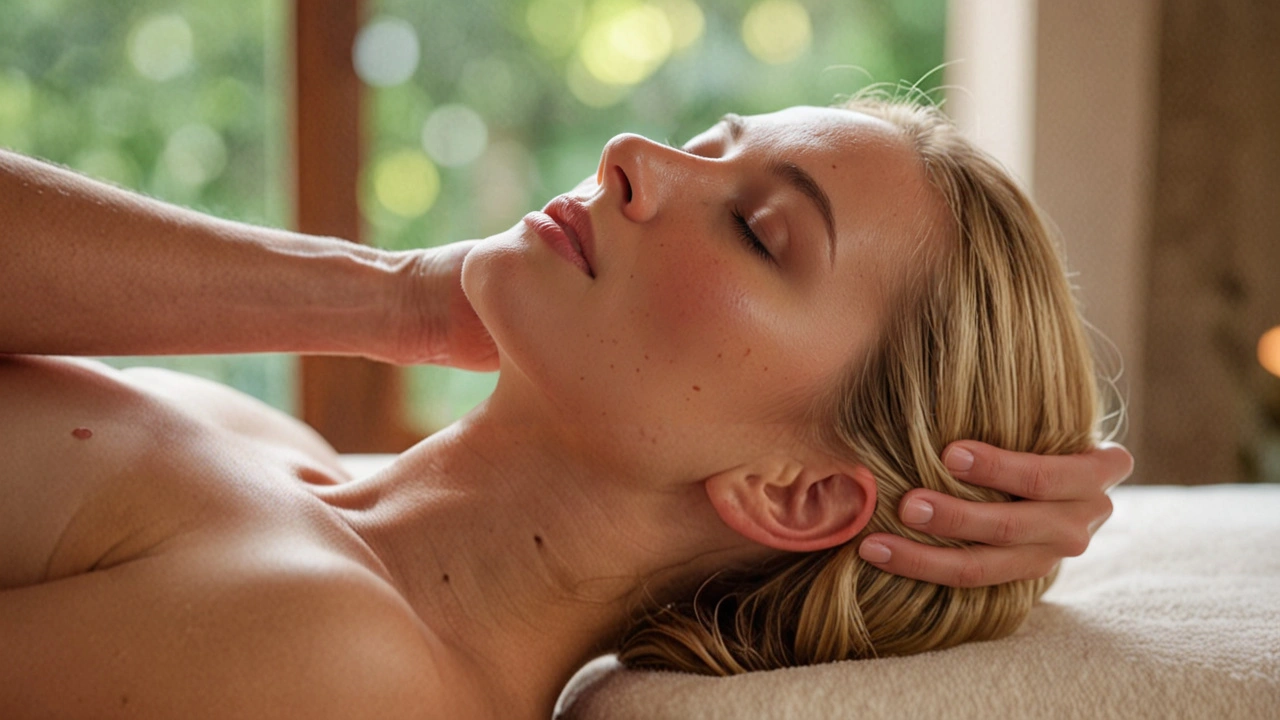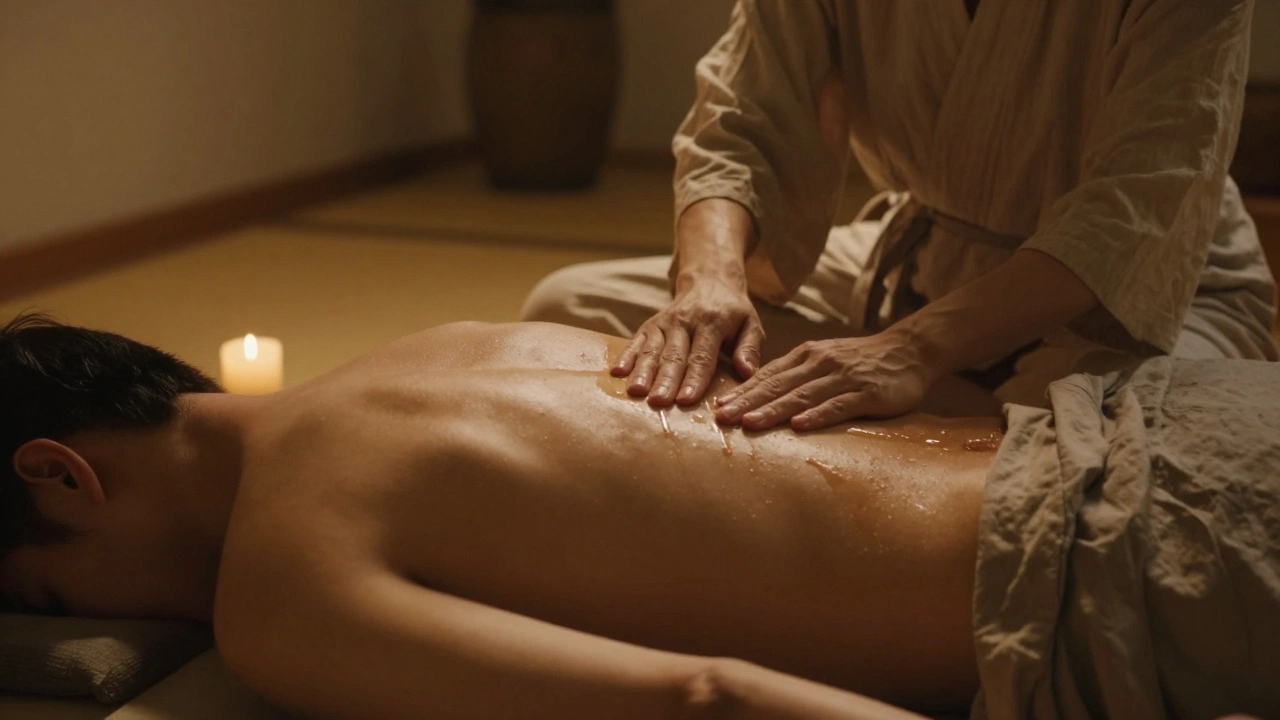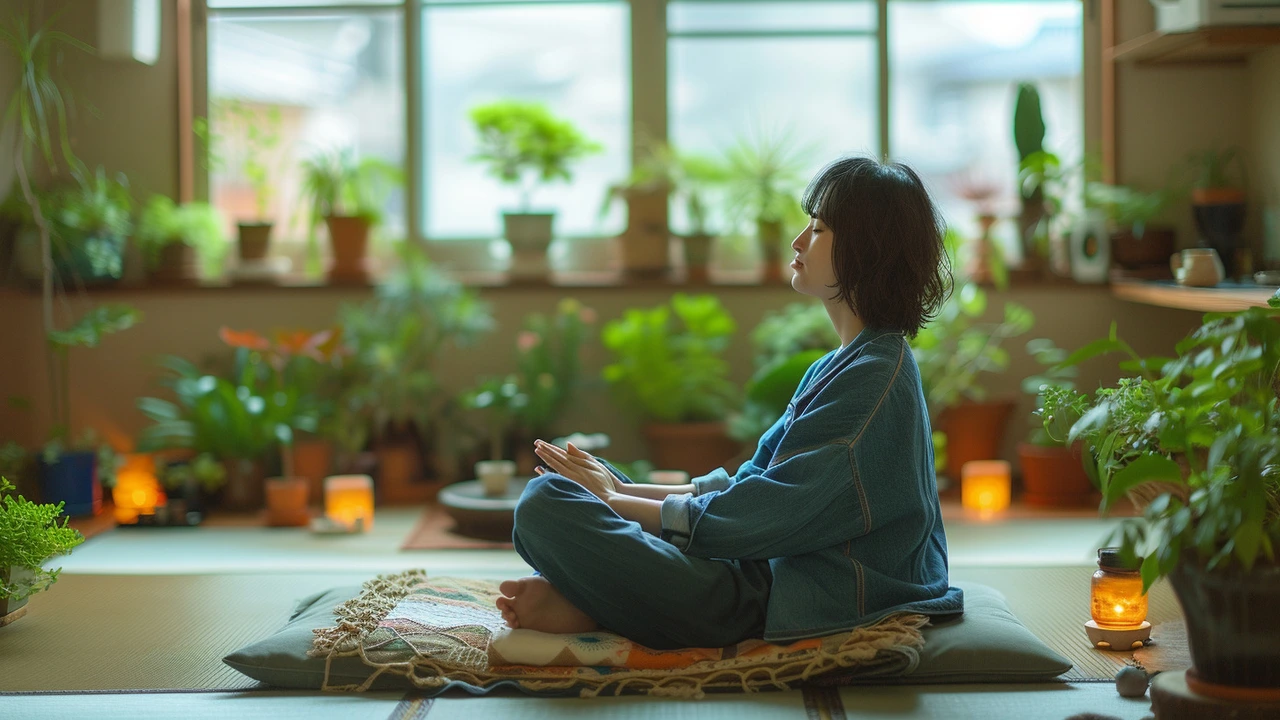Enhancing Your Wellness Routine with Thai Massage Techniques

In today's fast-paced world, finding effective ways to maintain our health and well-being is crucial. Have you ever considered Thai massage as part of your wellness routine? This ancient practice, which combines elements of acupressure, yoga, and deep tissue massage, offers both physical and mental benefits that can help you achieve a balanced life.
Dive into the fascinating world of Thai massage. Learn its history, discover its physical and mental advantages, and explore practical techniques that you can easily incorporate into your day-to-day life. Whether you're a wellness enthusiast or just curious about new ways to take care of yourself, this guide will provide you with valuable insights and tips.
- The History and Philosophy of Thai Massage
- Physical Benefits of Thai Massage
- Mental and Emotional Advantages
- Techniques You Can Try at Home
- Finding a Qualified Practitioner
- Incorporating Thai Massage into Your Daily Routine
The History and Philosophy of Thai Massage
Thai massage, also known as Nuad Bo-Rarn, is a therapeutic practice that has roots stretching back over 2,500 years. It is believed to have been developed by Jivaka Kumar Bhaccha, a renowned physician from India who was a contemporary of the Buddha. Jivaka's profound knowledge of medicine and his innovative techniques laid the foundation for what would eventually become Thai massage. This ancient art traveled through Southeast Asia, adapting to local cultures and traditions, eventually taking root in Thailand.
Unlike the more familiar Western forms of massage, Thai massage is grounded in a holistic approach that combines physical manipulation with spiritual and energetic principles. It's not just about kneading muscles but also about balancing the body's energy lines, known as 'Sen.' Practitioners believe that free-flowing energy through these lines is essential for maintaining health and well-being. The techniques involve rhythmic pressing, stretching, and bending, often choreographed to the therapist's own body movements, creating a unique dance-like experience.
The philosophy of Thai massage is deeply intertwined with Buddhism. Its practice is considered an act of 'metta' or loving-kindness, where the therapist mindfully channels positive energy to the recipient. This spiritual connection is an integral part of the experience, often overlooked in Western adaptations. The traditional settings for Thai massage usually involve serene environments that promote relaxation and meditation, further aligning with its spiritual roots.
"Thai massage is not just about physical touch; it’s a dance of energy, a transfer of spiritual and emotional connection," says Dr. Sansanee Namtip, a well-known practitioner from Bangkok Hospital.
Interestingly, Thai massage also includes elements of yoga, often referred to as 'lazy man's yoga.' The practitioner guides the recipient through a series of yoga-like poses, which are designed to release tension, improve flexibility, and open up the body's energy pathways. This combination of passive stretching and acupressure aims to create a state of harmony within the body, reducing stress and promoting holistic well-being.
Thai massage has gained recognition and respect worldwide. Yet, its essence and true benefits can best be experienced when understood in the context of its rich history and philosophy. Whether you're seeking relief from chronic pain, looking to enhance your flexibility, or simply wanting to reduce stress, incorporating Thai massage into your wellness routine offers numerous benefits. Its ancient roots and mindful purpose make it not just a physical therapy but a journey towards holistic health and spiritual awakening.
Physical Benefits of Thai Massage
Thai massage is not just a relaxing treat; it offers a wide array of physical benefits that can improve your overall health. One of the most acclaimed benefits is increased flexibility. This centuries-old practice incorporates assisted stretching, similar to yoga, which helps to elongate muscles and improve their range of motion. Many people find that regular sessions of Thai massage can significantly enhance their flexibility and ease muscle stiffness.
Another key benefit is pain relief. The rhythmic compressions and targeted pressure of Thai massage can alleviate chronic pain conditions such as lower back pain and migraines. By addressing specific muscle groups and pressure points, Thai massage can reduce tension and improve blood flow, helping to reduce pain and promote healing. Studies have shown that the technique can be particularly effective for individuals suffering from chronic headaches.
Thai massage also known to boost circulation. The unique combination of movements increases blood circulation, delivering more oxygen and nutrients to your tissues. This improved circulation can speed up healing, boost your energy levels, and help detoxify the body by eliminating waste products. People who regularly receive Thai massage often report feeling more vital and less fatigued.
According to the Mayo Clinic, "Regular massage can help with chronic pain, tension headaches, and improving posture." This fits seamlessly with the benefits of Thai massage.
Reducing stress and enhancing mental clarity are additional physical benefits. The methodical and meditative nature of this practice helps to calm the nervous system, making it easier to manage stress. When your body is less stressed, your muscles are less tense, allowing you to think more clearly. Many practitioners and enthusiasts find that the mindful aspects of Thai massage provide a mental detox as well as a physical one.
One cannot overlook its impact on muscular strength and endurance. While you may think of massage as merely a passive activity, Thai massage can be quite engaging. The practitioner uses their hands, elbows, knees, and feet to apply pressure and stretch your body, making the session interactive and sometimes physically demanding for both parties. This interaction can lead to stronger muscles and improved physical endurance over time.
Lastly, Thai massage can benefit your immune system. Some studies suggest that regular massage can promote lymphatic circulation, which is essential for a healthy immune system. The gentle yet effective techniques used in Thai massage help to move lymph fluids throughout your body, aiding in the removal of toxins and supporting your overall immune health. If you're looking to bolster your immune defenses, this could be a helpful addition to your wellness regimen.

Mental and Emotional Advantages
When we think about massage, we often focus on the physical relief from sore muscles and stiff joints. However, the advantages of Thai massage go beyond the physical realm. Its impact on mental and emotional health is profound, helping individuals find balance and calm in their busy lives. The ancient art of Thai massage incorporates rhythmic compressions, joint mobilizations, and gentle stretching, leading to an overall sense of well-being.
One of the key mental benefits of Thai massage is stress reduction. By promoting relaxation and lowering cortisol levels, Thai massage helps calm the mind. The deep breathing techniques often used in sessions can trigger the body's relaxation response, switching off the stress-inducing 'fight or flight' state. This is not just hearsay; studies have shown that regular massage therapy can significantly decrease anxiety levels.
Another emotional advantage of Thai massage is its ability to improve mood. Through the release of endorphins, the body’s natural 'feel-good' hormones, regular massage sessions can help alleviate symptoms of depression and anxiety. A more intimate connection with one's own body, facilitated by the gentle, mindful movements of Thai massage, can also lead to increased self-awareness and self-compassion, which are crucial to emotional health.
For those struggling with insomnia or poor sleep quality, Thai massage can be a game-changer. By inducing a state of deep relaxation and reducing muscle tension, it helps improve sleep patterns. A well-rested mind is more resilient and better equipped to handle emotional highs and lows. There's substantial evidence indicating the connection between regular massage and improved sleep quality, making Thai massage an excellent addition to your nighttime routine.
“Massage therapy has been shown to reduce anxiety, depression, and stress hormones, leading to improved mood and a more balanced emotional state.” – American Massage Therapy Association
Furthermore, the mindful aspect of Thai massage promotes mindfulness and focuses on the present moment. By concentrating on the sensations in your body and the flow of your breath, you can cultivate a state of mindfulness that carries into your everyday life. This heightened state of awareness helps in managing emotional responses more effectively, leading to greater emotional stability.
Thai massage also encourages human connection through touch, which is vital for emotional well-being. Touch is a fundamental human need, and the therapeutic touch involved in Thai massage fosters a sense of connection and belonging, filling a void that technology-driven lives often create. This human interaction can further contribute to reducing feelings of loneliness and isolation.
Finally, by enhancing mental clarity and focus, Thai massage can help in navigating the challenges of daily life with more ease. When your mind is not clouded by stress or emotional turmoil, you can make decisions more effectively and engage more deeply in your relationships and work. This mental sharpness is yet another compelling reason to integrate Thai massage into your wellness routine.
Techniques You Can Try at Home
Incorporating Thai massage into your wellness routine doesn't necessarily mean you'll need to visit a spa or a professional therapist every time. You can actually practice some simple and effective techniques right in the comfort of your own home. These methods can offer wonderful benefits, such as stress relief, improved flexibility, and better circulation. And who wouldn’t want that?
First, let's talk about a basic technique: foot massage. Start by sitting comfortably in a chair or on the floor. Take one foot in your hand, and use your thumb to apply gentle pressure on the sole, working from the heel to the toes. This simple action can help alleviate stress and improve blood flow. You can also use a small amount of oil to make the movements smoother. This experience is not only relaxing but can also help ease the tension accumulated throughout the day.
Next, we have a technique known as 'Thai yoga stretch.' This involves gentle assisted stretches that resemble yoga poses but are applied through a massage therapist's assistance. However, you can do many of these stretches alone or with a partner at home. For instance, you can try the 'spinal twist'. Lie on your back with your arms stretched out, bend your knees, and gently lower them to one side while keeping your shoulders flat on the ground. Hold the position for about a minute before switching sides. This particular stretch can help relieve back pain and improve spinal mobility.
Another easy technique you can try is shoulder and neck kneading. Using your fingertips, apply firm but gentle pressure on your neck and shoulder muscles. Move in circular patterns as you work your way down from the base of your skull to your shoulders. This can relieve tension headaches and reduce upper body stress. It's a great way to unwind after a long day, especially if you're working desk jobs or spending hours in front of a computer.
Adding some breath work can enhance the effectiveness of these massage techniques. Try to take deep, slow breaths as you perform the massages. This not only helps you relax but also increases oxygen flow to your tissues, which aids in muscle recovery. A simple breathing exercise involves inhaling deeply through your nose, holding the breath for a few seconds, and then exhaling slowly through your mouth.
You don’t have to do all these techniques at once. Even setting aside a few minutes each day for one of these practices can yield significant benefits. These simple methods can be easily introduced to your daily routine, bringing a touch of Thai massage into your home and life.
"Incorporating holistic practices like Thai massage into your life can dramatically enhance your well-being," says Elizabeth Blackburn, an accomplished wellness expert.
Remember, while practicing these techniques at home can be beneficial, it is crucial to listen to your body and not overdo it. If you experience any pain or discomfort, it is best to stop and consult a professional. With regular practice, you’ll soon notice the positive impact these Thai massage techniques have on your health and well-being. Happy massaging!

Finding a Qualified Practitioner
Locating a qualified Thai massage practitioner can be a bit challenging, especially if you're not sure what to look for. Thai massage is an ancient technique that requires comprehensive training and a deep understanding of human anatomy. Because of this, it's crucial to find someone who is well-versed in the art.
First, research any certifications or licenses your potential practitioner might hold. While formal certification isn't always required, it's a good indicator of their dedication and expertise. Many skilled Thai massage therapists have studied in Thailand, where they attended schools like the Wat Po Traditional Medical School in Bangkok. A certification from a reputable institution can assure you that the therapist has a solid foundation in the practice.
Experience is another key factor. Speak to potential practitioners about their background and how long they've been practicing. The more experienced they are, the better they will understand the nuances of Thai massage. Don’t hesitate to ask about the specific techniques they use, as different therapists might specialize in various aspects of the practice.
Client testimonials can also provide valuable insight into a therapist's skills and reliability. Look for reviews online or ask the practitioner if they can provide references from past clients. These firsthand experiences can give you a better idea of what to expect and help you make an informed decision.
“A qualified Thai massage therapist will always take the time to understand your unique needs and tailor their approach accordingly,” says Dr. Richard Gold, author of 'Thai Massage: A Traditional Medical Technique'.
Consider the environment where the therapy will be conducted. A peaceful, clean setting is essential for a relaxing and effective session. Visit the location if possible and ensure that it meets your standards for hygiene and comfort. The atmosphere of the place can greatly affect your overall experience and well-being.
Communicate openly with your chosen practitioner. Discuss any health concerns or injuries you might have. A professional therapist will appreciate this information and use it to modify techniques to ensure your safety and comfort. Having a candid discussion about what you hope to achieve through these sessions will also help set the right expectations.
Lastly, don’t forget the importance of personal connection. You should feel comfortable and at ease with your therapist, as this will make a significant difference in the quality of your experience. Trust and rapport between you and your practitioner can enhance the therapeutic benefits and make each session more enjoyable.
Finding the right professional might take some time, but once you do, the benefits of incorporating Thai massage as part of your wellness routine will undoubtedly be worth it. Take the necessary steps to ensure that you’re working with someone who is not just skilled, but also attentive to your personal needs and well-being.
Incorporating Thai Massage into Your Daily Routine
Creating a daily wellness routine that includes Thai massage can be transformative. This ancient practice, with its roots in Thailand’s rich cultural heritage, is highly versatile. You don't need to reserve it for special occasions; you can incorporate it into your everyday life with a few easy steps.
One of the simplest ways to start is by integrating some Thai massage techniques into your morning or evening stretch routine. For instance, the traditional Thai massage stretch for the lower back involves lying on your back and gently pulling your knees toward your chest. This movement helps release tension built up over the day or accumulated during sleep. Over time, such small additions can have a significant positive impact on your wellness routine.
Thai massage is not just about physical stretches but also about rhythmic compressions and keeping balance in the body's energy lines, known as ‘Sen.’ You can practice self-massage techniques targeting these energy lines. For instance, using your thumb to apply gentle pressure along your calf muscles can improve circulation and reduce muscle tension. This can be done while relaxing in the evening, watching TV, or even during a break at work.
Breathing exercises are another cornerstone of Thai massage. Incorporating these into your daily practice can be highly beneficial. Start with simple deep breathing exercises. Take long, slow breaths in through your nose and out through your mouth. Combine this with gentle self-massage on your temples or the back of your neck for a calming effect. Regular practice of such exercises can help reduce stress levels and promote emotional well-being.
A key aspect of integrating Thai massage into your daily life is consistency. A common recommendation from experienced practitioners is to set aside at least 10-15 minutes every day for these activities. This way, it becomes a habit rather than an occasional indulgence. Over time, you may find this short but regular practice brings substantial benefits to both your physical health and mental clarity.
For those who prefer guidance, using online resources can be incredibly helpful. Numerous tutorials and apps offer guided Thai massage sessions that you can follow along at home. Search for certified and well-reviewed sources to ensure you’re practicing correctly. If you're new to this, starting with a guided session can help you understand the basics and build confidence before you branch out on your own.
Making Thai massage a family activity can also be a beautiful way to bond. Teaching simple techniques to your children or partner can turn it into a shared experience. Imagine ending your day with a family stretch session or a few minutes of mutual foot massage. Not only does this promote a healthy lifestyle, but it also fosters a sense of togetherness and mutual care.
If you’re looking for specific resources or inspiration, experts often suggest including Thai massage in places you're already relaxed. For instance, while lying in bed, you can easily perform hand and foot massages or gentle stretches. The key is to ensure that this becomes a seamless part of your day rather than an additional task on your to-do list.
“The beauty of Thai massage is its versatility; it’s something you can easily integrate into your daily life to enhance your well-being,” says Dr. Patchara A., an expert in holistic health.
Incorporating Thai massage into your daily routine doesn’t require much time but offers significant benefits. With a mix of self-massage, breathing exercises, and simple stretches, you can turn a few minutes each day into an effective wellness strategy.
Why not start today? With some focus and dedication, you can transform your wellness routine and experience the holistic benefits Thai massage has to offer.





